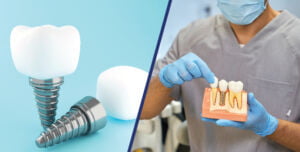

Periodontal disease, also known as gum disease, is a common oral health condition that affects millions of people worldwide. It is a progressive condition that, if left untreated, can lead to serious complications. In this article, we will delve into the causes, symptoms, and treatment options for periodontal disease, as well as explore ways to prevent and manage this condition effectively.
Periodontal disease is an inflammatory condition that affects the tissues surrounding and supporting the teeth. It primarily begins with the accumulation of plaque, a sticky film of bacteria that forms on the teeth and gums. If not removed through regular brushing and flossing, plaque hardens and turns into tartar, which can only be removed by a professional dental cleaning.
Several factors contribute to the development of periodontal disease. The primary cause is poor oral hygiene, as inadequate brushing and flossing allow plaque to build up and bacteria to multiply. Other factors that increase the risk of periodontal disease include:
Smoking: Tobacco use weakens the immune system and hampers the body’s ability to fight off infections, including gum infections.
Hormonal changes: Hormonal fluctuations during puberty, pregnancy, and menopause can make gums more susceptible to gum disease.
Genetic predisposition: Some individuals may have a genetic susceptibility to periodontal disease, making them more prone to developing it.
Diabetes: People with diabetes are at a higher risk of developing gum disease due to their compromised immune system.
Certain medications: Some medications, such as antidepressants and antihypertensive drugs, can affect oral health and increase the risk of gum disease.
Detecting periodontal disease in its early stages is crucial for successful treatment. Here are some common signs and symptoms to watch out for:
If you experience any of these symptoms, it is important to schedule an appointment with your dentist for a thorough examination and diagnosis.
Periodontal disease progresses through different stages, each with its own characteristics and severity. Understanding these stages can help determine appropriate treatment options. The stages of periodontal disease are as follows:
Gingivitis: This is the earliest and mildest stage of gum disease. It is characterized by inflamed gums that may bleed during brushing or flossing but do not exhibit any irreversible damage to the supporting structures.
Early periodontitis: At this stage, the infection begins to spread beneath the gum line, causing damage to the connective tissues and bone supporting the teeth. Gums may start to recede, forming pockets that trap plaque and bacteria.
Moderate periodontitis: As the disease progresses, the pockets between the gums and teeth deepen, leading to further bone loss. Teeth may become loose or shift, affecting their stability.
Advanced periodontitis: In the final stage, significant bone loss occurs, and teeth may loosen or even fall out. Severe gum recession and deep pockets are present, increasing the risk of infection and tooth loss.
The treatment for periodontal disease depends on the stage and severity of the condition. Common treatment options include:
Scaling and root planing:
This non-surgical procedure involves removing plaque and tartar from the teeth and smoothing the root surfaces to promote gum reattachment.
Antibiotics:
In some cases, antibiotics may be prescribed to control bacterial infection and reduce inflammation.
Gum surgery:
Advanced cases may require surgical intervention to remove tartar deposits, reduce pocket depth, and repair damaged bone or gum tissue.
Dental implants:
If tooth loss occurs as a result of advanced periodontal disease, dental implants can be an option to replace missing teeth and restore oral function.
Early detection and treatment of periodontal disease play a crucial role in maintaining optimal oral health. Detecting gum disease in its initial stages allows for timely intervention, preventing the condition from progressing and causing irreversible damage.
When periodontal disease is identified early, treatment options such as scaling and root planing can effectively remove plaque and tartar buildup, reducing inflammation and preventing further deterioration of the gums and supporting structures. Early intervention also helps to preserve the integrity of the teeth, as untreated gum disease can lead to tooth loss due to bone damage and gum recession.
Furthermore, early detection of periodontal disease allows for more conservative and less invasive treatment approaches. Non-surgical methods, such as scaling and root planing, are typically recommended in the early stages, which can help eliminate the need for more extensive procedures like gum surgery.
By addressing the condition promptly, individuals can avoid potential discomfort, complications, and higher treatment costs associated with advanced stages of periodontal disease.
In addition to the benefits of early intervention, timely treatment of periodontal disease can significantly improve overall oral health and reduce the risk of systemic health issues. Research has linked gum disease to various health conditions, including heart disease, diabetes, and respiratory illnesses.
By addressing gum disease promptly, individuals may lower their risk of developing these associated health problems. Regular dental check-ups and proactive management of periodontal disease enable individuals to maintain a healthy mouth and enhance their overall well-being.
Preventing periodontal disease starts with good oral hygiene practices. Here are some tips to keep your gums healthy:
Periodontal disease is a common oral health condition that can lead to serious complications if left untreated. By understanding the causes, recognizing the symptoms, and adopting good oral hygiene habits, you can effectively prevent and manage this condition. Remember to visit your dentist regularly for professional care and advice tailored to your specific needs. Take control of your oral health to enjoy a beautiful smile and a healthy mouth for years to come.





Spark Family Dental is a Tracy-based local dentist providing quality care tailored to your needs. With experienced professionals and the latest technology, we can ensure you receive the best dental services possible. We accept PPO, and offer flexible payment plans through CareCredit.